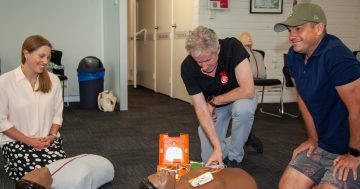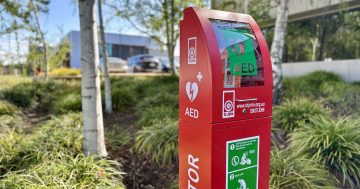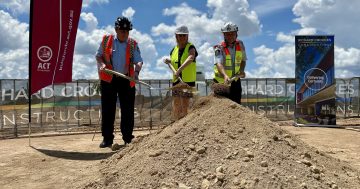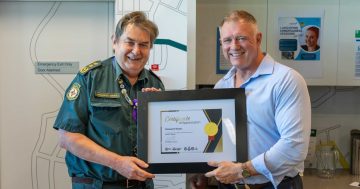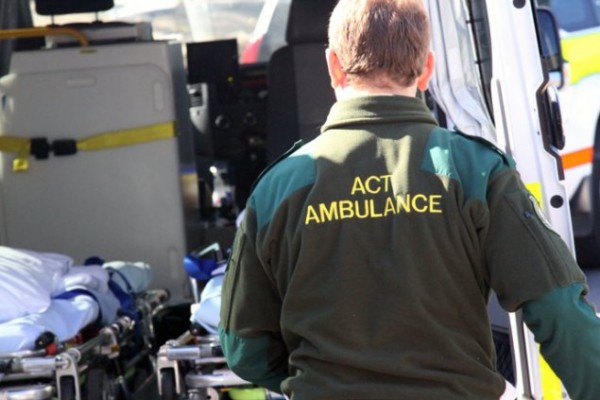
Time is a critical factor to survive a cardiac arrest. Photo: ACT Ambulance.
As families come together over the holiday season, the ACT Emergency Services Agency (ACT ESA) is encouraging the community to understand the importance of Call.Push.Shock to save a loved one’s life.
With only one in 10 people surviving out-of-hospital cardiac arrests, time is a critical factor as for every minute that passes without intervention, the chance of survival decreases by 10 per cent.
Once the heart stops pushing oxygen around the body and to the brain, the survival rate drops for anyone experiencing cardiac arrest. By the 10-minute mark, the damage to the brain is nearly irreversible.
ACT Ambulance Service (ACTAS) Chief Officer Howard Wren said 80 per cent of out-of-hospital cardiac arrests happen at home.
“You could be responsible for saving a loved one, and that’s why it’s important everyone understands the Call.Push.Shock response. It could make all the difference if a loved one experiences a cardiac arrest outside of hospital,” Chief Officer Wren said.
“A cardiac arrest can happen suddenly with minimal symptoms. The victim will lose consciousness, display ineffective breathing and have no pulse. This can be terrifying for many bystanders, but your quick response will greatly improve their chances of survival.”
Mr Wren explained the three-step response: “Call means call Triple Zero (000) immediately. The sooner the call, the sooner help will arrive.”
He said the second step – Push – is to start chest compressions as soon as possible by pushing down on the centre of the person’s chest hard and fast, aiming for a rate of two compressions per second.
The third step is to send someone to collect the nearest Automated External Defibrillator (AED) if there is one nearby but do not stop compressions to get an AED.
If there is an AED, Mr Wren says you need only turn on the machine and follow the instructions.
Chief Officer Wren said a common misconception is that a cardiac arrest and a heart attack are the same thing and that CPR will bring the victim back to life in both cases.
“A heart attack can be recognised hours or days before. The victim may experience chest pain, fatigue, weakness and difficulty breathing. If you suspect someone may be having a heart attack, call Emergency Triple Zero (000) and follow advice from Ambulance Service,” Chief Officer Wren said.
“However, a cardiac arrest requires a different response and that’s why we want the community to know what’s involved in Call.Push.Shock as well as CPR, so they are ready to respond to either emergency.”
For information and tips on Call.Push.Shock visit the ESA website.












